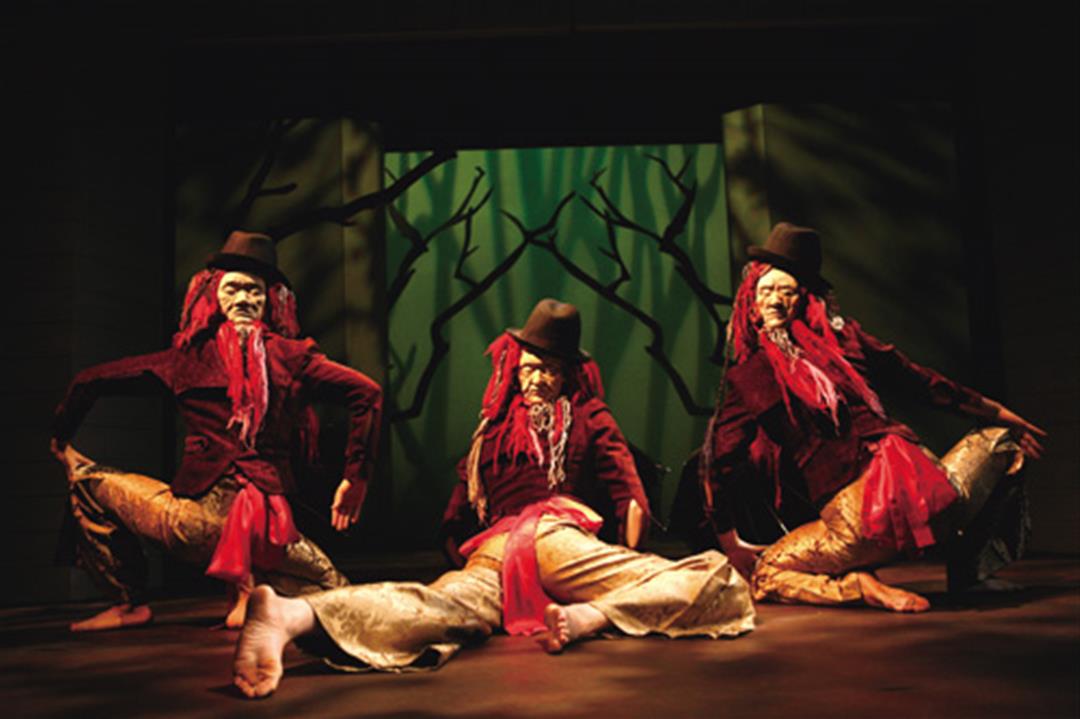
What's special about Taiwan's performing arts? Lee Huey-mei, former program manager at the National Theater and Concert Hall, says that the Taiwanese troupes that attract a lot of international attention, such as Cloud Gate Dance Theater, Utheatre, and Legend Lin Dance Theater, all possess an "East Asian Zen-Buddhist vibe" and an "international aesthetic sense that transcends language."
Small, new companies with a diverse repertoire that are topical, vital, explosive, and skilled at emulating other styles have great potential. Lee mentions that during theater director Robert Wilson's visit to Taiwan, Wilson enjoyed works by local directors such as Wang Chia-ming and Baboo. The American found Taiwan's artists interesting and felt they offered a distinctive and fascinating perspective.
But in the midst of this rapid and diverse outpouring of creativity, there are concerns about the stability of the foundation and a lack of follow through. Lee says that in the international market, theater companies typically take five to 10 years to settle into a style, then feel around for new directions.
She notes that Robert Wilson established himself as a big name in the 1970s and in the decades since has maintained a consistent, highly formalistic aesthetic sense and a clean and fluid style. She argues that big-name foreign artists are allowed to introduce variations on a core theme, whereas Taiwanese artists who continue to work in the same style are likely to be thought of by audiences as lacking in creativity. Given that, how are we to define terms like "style" and "innovation"?
Andy Yu, secretary general of the Performing Arts Alliance, argues instead that the local performance market suffers from M-shaped segmentation. Large companies like Stan Lai's Performance Workshop Theater or the Green Ray Theater, which performed Wu Nien-jen's "Human Condition" series, are already major established brands. In Taiwan, big names tend to remain big names. Cloud Gate, the Performance Workshop, Green Ray, and the Godot Theater Company dominated the market more than a decade ago, and still do. Meanwhile, small theater companies waging guerilla warfare, like Shakespeare's Wild Sisters Group, which won a Taishin Arts Award in 2009, may also produce outstanding works, but are on a radically different track.
Medium-sized companies are caught in the middle. They lack the brand name and stability of a large company, and also lack a small company's ability to put on vibrant low-cost productions with amateur actors. While Taiwan's large companies have maintained their positions at the top of the heap for more than a decade, only a very few small companies have succeeded in growing larger. Tainan Jen Theater, which took the six-hour-long K24 from experimental theater to the National Theater, is one of the few.
Yu believes that one of the key factors giving rise to this situation is the lack of medium-sized performance spaces. Small and large theaters work in very different performance parameters: experimental versus accessible, a focus on body language versus dialogue.... There's also a huge disparity in funding for productions. Taiwan's lack of physical venues means that it doesn't have the kinds of spaces that would allow companies to undergo gradual, exploratory transformations.
Yu feels that this year the performing arts in Taiwan will begin to "clearly move towards the next phase" in their development and that there are a few important indicators to keep an eye on. As the Lan Ling Theater Workshop's 30th-anniversary celebration made clear, Taiwanese theater has already existed for more than a generation. Now, the Council for Cultural Affairs has doubled its annual subsidy to Taiwan's performing arts troupes from NT$200 million to NT$400 million. It has also doubled the portion of this subsidy provided directly to troupes and applicable to arranging productions from NT$100 million to NT$200 million. The rest of the subsidy goes to funding foreign tours, negotiating arrangements for performances in alternative spaces, cultivating talent, and other activities.
According to the Performing Arts Yearbook 2009, Taiwan's performing arts troupes perform more than 13,000 shows every year, including 200 completely new productions. Their creative output is among the best in the world, but their audience is small. This means they have to keep pushing out new works to maintain their revenues. Few companies anywhere in the world put on two new shows every year the way Cloud Gate Dance Theater does. The increase in government funding for the performing arts should provide troupes with the resources to put on bigger and better shows, and allow them time to think and explore still more performing possibilities.

@List.jpg?w=522&h=410&mode=crop&format=webp&quality=80)




